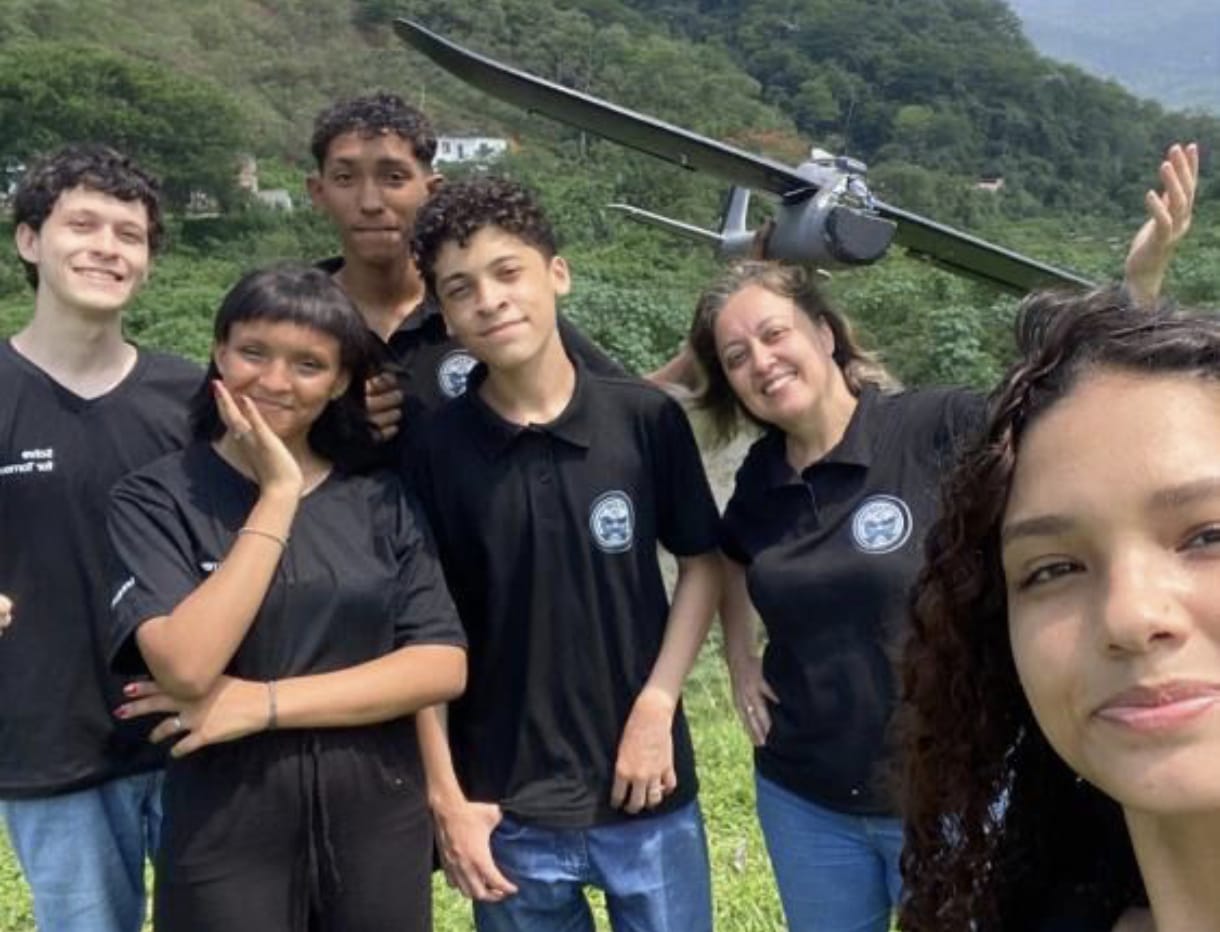Empathy is the starting point of any social transformation. Only by walking in someone else’s shoes and understanding the perspectives of those living different realities can one think about solutions for the challenges of a school, territory, or community. In the Solve for Tomorrow program, empathy is a soft skill that paves the way for all stages of Project-Based learning (PBL).
It was through a deep empathetic exercise that the project Plane M’s 441, finalist of the Solve for Tomorrow Brazil program in 2024, was born. The CIEP 441 Mané Garrincha school, in Magé (RJ), is close to the river Inhomirim, and its floodwaters have already caused inundations and landslides. To help in disaster prevention, the students created a glider equipped with GPS and a camera that monitors areas of sedimentation and helps the city to understand possible points of attention in the rainy season, alerting the population.
“Empathy was the essential engine of the project. In addition to hearing reports from people who live near the river, two students of the team also experienced the impacts of the flood on their skin, reporting moments of fear and insecurity. The direct experience made us understand the urgency of the situation, and pushed us to create a social impact project, thinking about the collective good and the prevention of new disasters”, explains Rosiane Paes, mediator teacher of Plane M’s 441.
The educator encouraged the use of empathy not only in the definition of the STEM project (acronym for Science, Technology, Engineering and Mathematics) but also in all stages, from ideation to prototype testing. Below, we highlight five tips given by Paes that can support other educators to strengthen empathy strategies in their projects.
1. Conversation circle
Any empathetic practice within STEM projects begins with dialogue and attentive listening. Therefore, talking circles between students help to define an empathic tone for the rest of the development process, as well as being fundamental moments for the consolidation of the idea of the prototype. The teacher recommends that these moments of sharing be welcoming, without judgment, where students can understand mistakes as an essential part of learning.
In the case of Plane M’s 441, the circles helped mainly to accommodate students’ fears and anxieties regarding the flooding of rivers and its consequences on community life. It was from the report of the students who lived daily with the risk of floods that the first ideas for monitoring points of attention and the possible partnership with the public authority emerged.
2. Multimedia resources for an in-depth view of the problem
The research can also become a stage of developing empathy. Bibliographic and visual resources help students to have a broader understanding of the subject and broaden the look from diverse perspectives. Rosiane encouraged her group to watch videos and local reports to deepen understanding of the flood problem. Through audiovisual experiences, students began to see the project not only as a school activity, but as a social action.
3. Visits to the territory
Much of the empathic development of the Plane M’s 441 project took place in visits to the territories affected by the flooding of the Inhomirim river. The walks along the banks of the river helped making more concrete the challenges that the glider prototype needed to meet. In the case of this specific project, the students were already part of the territory for which the prototype would be developed. If this does not happen in the project, Rosiane still strongly recommends visiting the territory to which the prototype is intended.
4. Community interviews and listening
Nothing develops more empathy than talking with those who live the problem that the prototype seeks to solve, whether physical or representational, as is the case of an awareness campaign. In addition to the attentive and respectful dialogue, it is always important to make clear what the purpose of the prototype is, how it will be developed and, whenever possible, give a return to the community when conducting tests.
5. Empathy as a pedagogical exercise
Part of the challenge of STEM projects has to do with frustration when a prototype test goes wrong, or when some step does not achieve the expected result. In these moments, Rosiane advises teachers to exercise empathy as a pedagogical practice to encourage students not to give up:
“My tip for teachers is to welcome mistakes as an essential part of learning. Create safe environments, where the attempt and failure are not cause for shame but natural stages of knowledge construction. Listen to your students, validate emotions and invite the community to participate. Being empathetic is more than having patience: it’s offering emotional support, recognizing the effort, and showing that together it is possible to move forward”.





